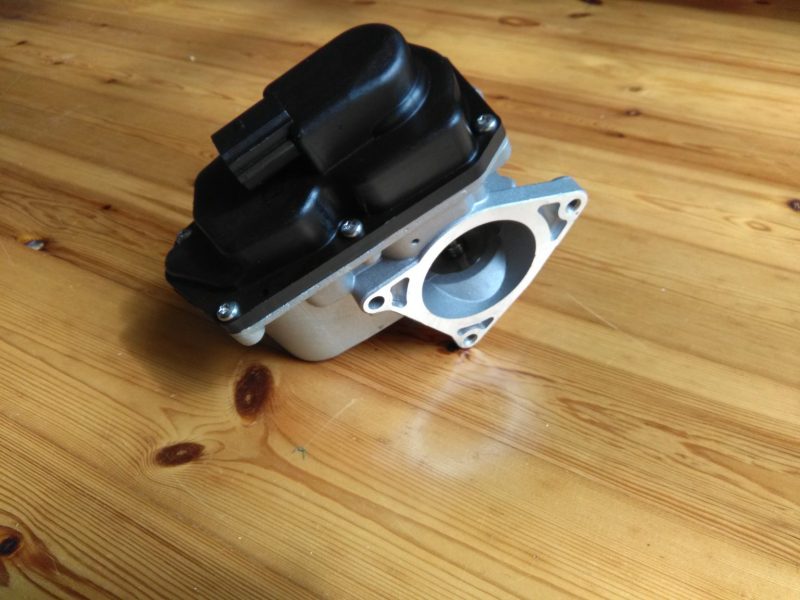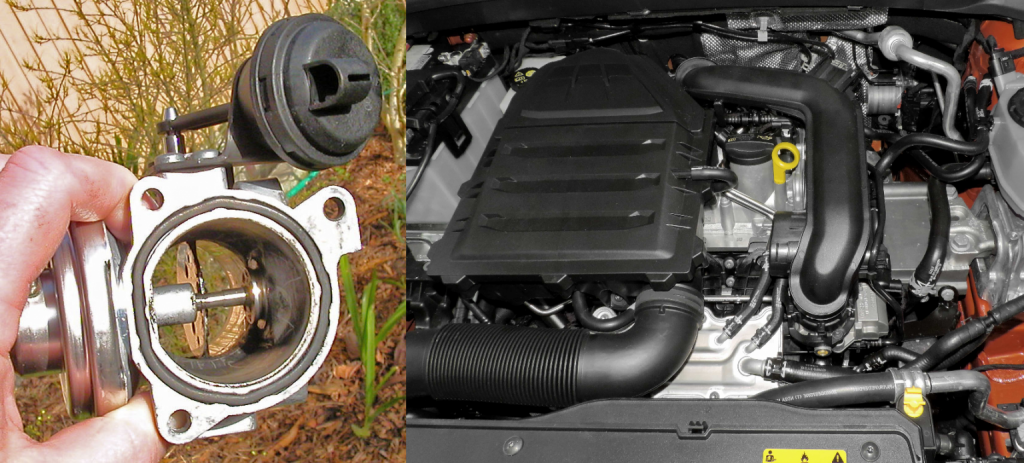Contents
– Focus on EGR valve cleaning products
– Step 1: Follow safety instructions when handling the products
– Step 2: Treat the EGR valve
– Step 3: Treat the intake system on the vehicle
– Step 4: Perform preventive treatment
An EGR valve recirculates exhaust gases into the intake system to reduce emissions. However, this principle also encourages particles (hydrocarbons, soot, carbon deposits, etc.) in the intake system.
When it becomes heavily clogged, the EGR valve no longer functions properly. It is then necessary to remove it, clean it, and treat the whole system on the vehicle.
This post provides you a step-by-step guide on how to clean an EGR valve.
Materials needed to clean an EGR valve.
– Thin protective gloves
– Safety glasses
– Brush
– Squeegee
– Container
Focus on EGR valve cleaning products
This is a curative product, of which many variations are available on the Internet.
Good to know: avoid aerosol products injected directly through the air supply hose in the intake circuit. This process, poorly controlled, can be detrimental to the engine.
There is, for example, a kit from a well-known brand in the world of additives, cleaners, and engine treatments, called “EGR valve cleaner kit”. It is offered at $36.
– it is composed of:
◦ an aerosol to provide for the localized treatment of scale (ideal for the EGR valve removed);
◦ a cleaning bottle to be mixed in the tank (with at least 20 l of fuel).
Good to know: another solution is applying a treatment by an injection station, either by chemical treatment or pyrolysis. This process is very effective ($50 to $80 per treatment), but professionals only carry it out.
1. Observe the safety instructions when handling the products
Cleaning products are aggressive, so take the following precautions.
– Work with gloves and avoid direct contact with the product.
– Wear protective glasses.
Necessary: In case of splashes, rinse your eyes with plenty of water.
– Avoid the proximity of a flame as the aerosol content is flammable.
Good to know: before working on your car, make sure that the use of a product does not lead to a nullity of the guarantee by the manufacturer (see clauses).
2. Treat the EGR valve
– Remove the EGR valve and place it in a plastic container (a commercial drain pan or simply a cut-up 5-liter oil can).
Good to know: the EGR valve is not easily accessible on some vehicles. In this case, it is better to see a garage.
– Place the assembly on a workbench, for example, where sensitive parts cannot be hit by splashing.
Good to know: keep your distance from the car and its bodywork.
– Spray the aerosol product over the entire contaminated surface of the valve.
– Do the same on the vehicle for all accessible parts.
– Allow the product to work for 5 to 10 minutes.
– Scrape off any remaining scale with a scraper.
– Remove any remaining traces by spraying the product and allow to dry.
– Refit the EGR valve.
Good to know: often, the reassembly of the EGR valve requires the use of a diagnostic tool for learning by the ECU.
3. Treat the intake system on the vehicle

Once the EGR valve is reassembled on the engine, this step allows you to treat inaccessible areas (inside the intake manifold, pipes, valves, combustion chambers…).
– Run the engine to bring it to operating temperature.
– Pour the bottle of cleaner into the fuel tank.
Good to know: allow at least 20 l of fuel in the tank to make the mixture.
– Run the engine at high speed or test drive it on the road.
For example, select a highway trip and use higher engine speeds. Drive at the maximum speed allowed with a lower gear (5th gear instead of 6th, or 4th gear instead of 5th).
4. Perform a preventive treatment
Once you have noticed an improvement in the vehicle’s operation (no more engine jerks, better performance, less fuel consumption, less smoke, etc.), you may want to continue preventive treatment.
Important: if the symptoms persist after treatment, a professional must carry a thorough diagnosis.
– Consider preventive treatment in case of regular clogging, often due to the conditions of use of the car.
Good to know: if you do not notice any malfunction, there is no need to use these expensive products.
– The same suppliers offer preventive products to be administered regularly. A 500 ml bottle can cost $35.
– The frequency of preventive treatment varies according to the use of the vehicle:
◦ every 5,000 km for short urban trips of less than 30 km;
◦ every 15,000 km for sustained use (more than 50 km of one content and highway travel).
– As with the curative treatment, the product is used by pouring it into the fuel tank.
That’s it. You have now cleaned your EGR valve. Remember to share your experience below.





2 thoughts on “How to Clean an EGR Valve”